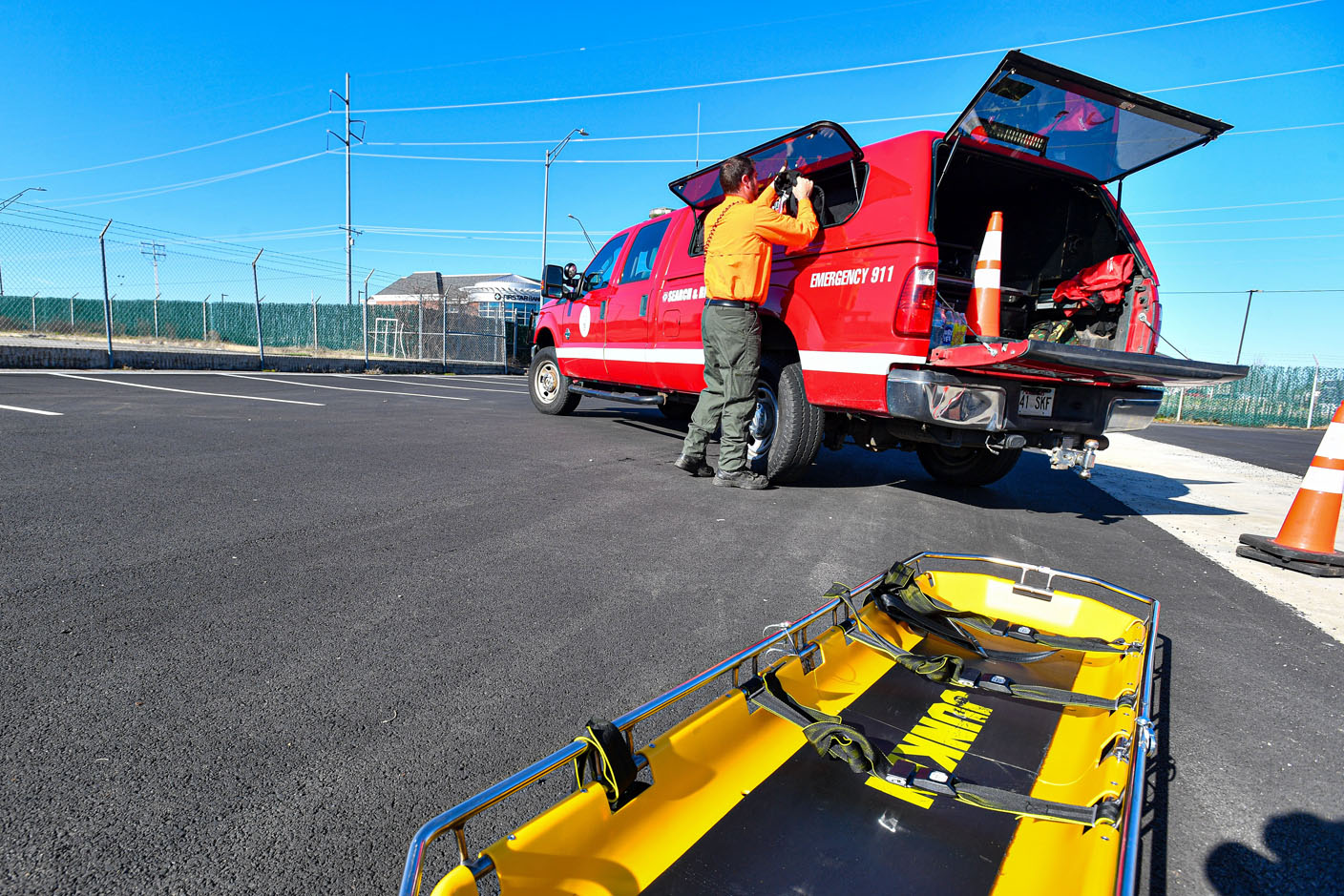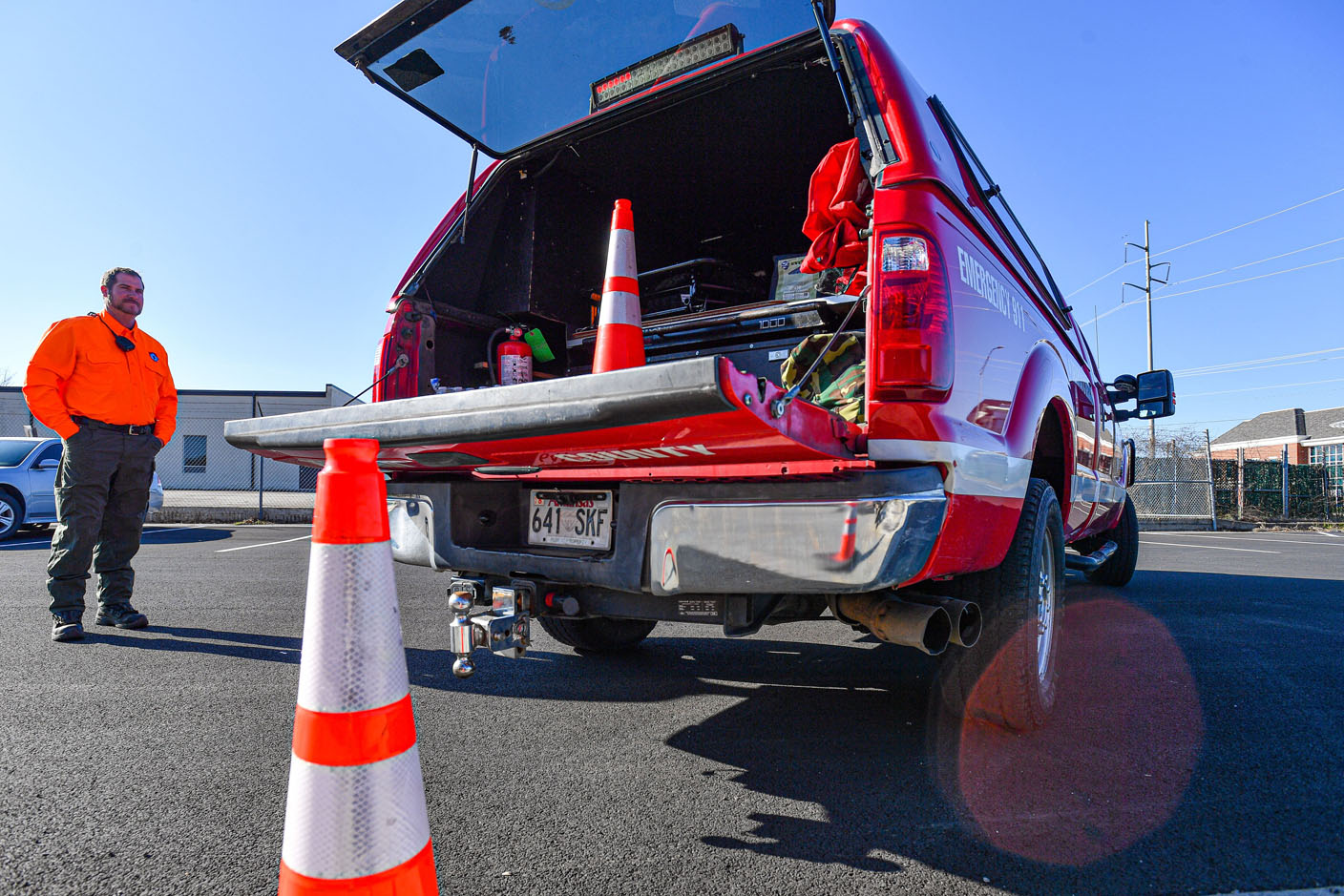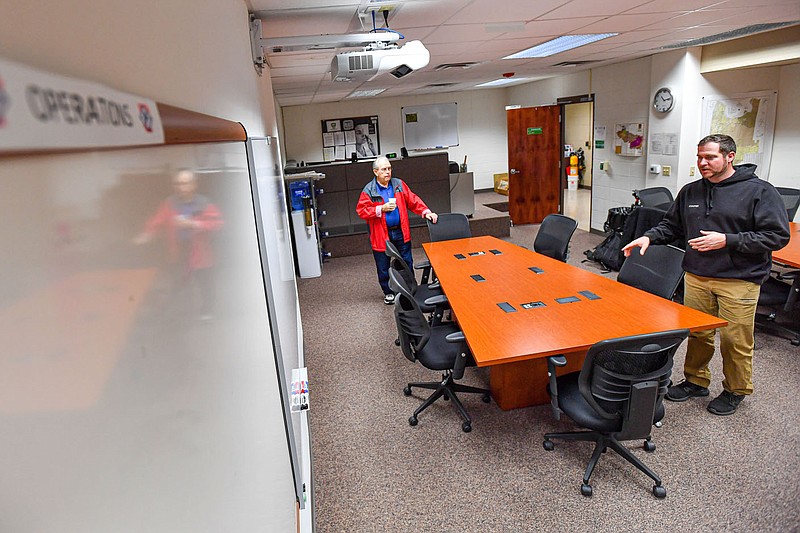While Washington County looks for a permanent home for its emergency services in Northwest Arkansas, officials in some of the state's largest counties say such a dedicated facility is essential.
"Even smaller counties need someplace where people can work together during an emergency," Kendall Beam, director of emergency management for Sebastian County in west-central Arkansas, said. "It's a whole lot harder to do our jobs if we don't have a designated location for everyone to work from during emergencies."
Washington County is moving ahead with a project to build a facility for its Department of Emergency Management.
The department's offices are housed in space made available by the state Fire Academy at its training facility in Lincoln. Prior to that, the offices were in downtown Fayetteville, 105 N. Mill Ave., in what is now the Northwest Arkansas Crisis Stabilization Unit. Once it was decided the stabilization unit would be in that building, emergency services was moved to the County Annex building for a brief time in early 2019. That building was then designated as the location for a new circuit judge's offices and courtroom, and emergency services moved to Lincoln in November 2020.
John Luther, Washington County's director of emergency management, said the county had outgrown the 5,000 square feet in what is now the Crisis Stabilization Unit and a new facility was becoming necessary even before the department moved out. He said the county needs to build with an eye on future growth as well as current needs.
"If we had outgrown that 5,000 square feet, do we need 10,000 square feet now?" he said. "What about 10, 15 or 20 years from now?"
Luther said the county needs a building "hardened" against most severe weather events, with secure communications facilities and an emergency power supply. The center should have conference rooms, training space and offices, as well as sleeping quarters, kitchen and bathroom facilities for use during prolonged emergency events. He said the county should design a building with room for expansion to avoid a lack of space in the future.
"We don't want to be shortsighted in what we do," he said.
Washington County Judge Patrick Deakins said Thursday the county has narrowed its search for a building site to the county's "South Campus," which also houses the Sheriff's Office and jail, the Juvenile Justice Center, the Road Department, the coroner's office and other county offices. Once a site is selected, Deakins said, the next step will be to ask the Quorum Court to approve money for architectural and engineering work on the building.
Sebastian County shares an old National Guard armory building at 8400 S. Zero St. with the city of Fort Smith. Beam said the facility is in constant use for training and conferences in addition to its use in emergencies.
"We can hold 24 people comfortably in our conference room," Beam said. "We have had as many as 60 people in there with it being standing-room only. It was like that during the 2019 flooding that we had."
Beam said the facility has a radio system linked to the state's emergency communications system and also has a ham radio system available with a list of local radio operators who will work with the county if needed. There is a "policy room" for elected officials and others to use during emergencies separate from the main conference room. The building also houses training facilities for Fort Smith's Police and Fire departments.
A county having its own emergency operations center is a positive thing, Beam said. "I have had every agency you can think of -- police and fire departments, local, state and federal agencies, the Red Cross, the Salvation Army, the United Way -- in our [center] during the pandemic, during floods, severe weather or any large-scale event. It works out better if you have a centralized location where everyone can work together."
In Benton County, the emergency operations center is housed in the basement of the County Administration Building at 215 E. Central Ave. in Bentonville. Robert McGowan, the county's public safety administrator, said the center is adjacent to the Central Communications center and has a large conference room and some office space. With about 545 square feet of space now in use, McGowan said the county has seen the need for growth, but there are no plans for any changes in the near future.
The space is constantly used for conferences and training, McGowan said, as well as emergency situations. The emergency operations center is used in severe weather and flooding events and was activated when thousands of protesters gathered on the nearby Bentonville square in the wake of George Floyd's death in 2020.
"It's something that when you need it, you've got to have it," McGowan said.
In Pulaski County in central Arkansas, the emergency operations center is housed in the county's Road and Bridge complex, according to Madeline Roberts, the county's director of communications. The Pulaski County center has about 1,000 square feet in the building, and Roberts said the location is adequate to house the department's eight employees. Roberts said the space is used during disasters and emergencies and is in daily use for training and conferences.
 Travis Cooper, deputy director of the Sebastian County Department of Emergency Management, checks equipment in an emergency response vehicle, Friday, March 17, 2023, at the emergency operations center in Fort Smith. Visit nwaonline.com/photo for today's photo gallery. (River Valley Democrat-Gazette/Hank Layton)
Travis Cooper, deputy director of the Sebastian County Department of Emergency Management, checks equipment in an emergency response vehicle, Friday, March 17, 2023, at the emergency operations center in Fort Smith. Visit nwaonline.com/photo for today's photo gallery. (River Valley Democrat-Gazette/Hank Layton) Travis Cooper, deputy director of the Sebastian County Department of Emergency Management, checks equipment in an emergency response vehicle, Friday, March 17, 2023, at the emergency operations center in Fort Smith. Visit nwaonline.com/photo for today's photo gallery. (River Valley Democrat-Gazette/Hank Layton)
Travis Cooper, deputy director of the Sebastian County Department of Emergency Management, checks equipment in an emergency response vehicle, Friday, March 17, 2023, at the emergency operations center in Fort Smith. Visit nwaonline.com/photo for today's photo gallery. (River Valley Democrat-Gazette/Hank Layton) Travis Cooper, deputy director of the Sebastian County Department of Emergency Management, checks equipment in an emergency response vehicle, Friday, March 17, 2023, at the emergency operations center in Fort Smith. Visit nwaonline.com/photo for today's photo gallery. (River Valley Democrat-Gazette/Hank Layton)
Travis Cooper, deputy director of the Sebastian County Department of Emergency Management, checks equipment in an emergency response vehicle, Friday, March 17, 2023, at the emergency operations center in Fort Smith. Visit nwaonline.com/photo for today's photo gallery. (River Valley Democrat-Gazette/Hank Layton) Travis Cooper, deputy director of the Sebastian County Department of Emergency Management, checks equipment in an emergency response vehicle, Friday, March 17, 2023, at the emergency operations center in Fort Smith. Visit nwaonline.com/photo for today's photo gallery. (River Valley Democrat-Gazette/Hank Layton)
Travis Cooper, deputy director of the Sebastian County Department of Emergency Management, checks equipment in an emergency response vehicle, Friday, March 17, 2023, at the emergency operations center in Fort Smith. Visit nwaonline.com/photo for today's photo gallery. (River Valley Democrat-Gazette/Hank Layton)